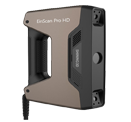Reverse Engineering

Cross Sectional Curves
Cross Sectional Curves in .igs or .stp format – These are actual splines or curves fitted in the cross sections created from the STL models. These are the cheapest form of reverse engineering and can be used by the customer to build his own CAD models, and also just use them straight up to create after market parts, or use as a boundary volume when he is designing other objects around the scanned object. Especially for customers who cannot use STL models, and those who cannot afford higher priced models below, and want to just bring some basic geometry into their CAD system.
Organic Surface Models
Organic surface models , in .igs or .stp format- These are good for toys, and other organic shapes, which are very difficult to model with standard features. A typical example will be coral reef, lump of clay, faces, etc. Download sample organic models.
Engineering-grade CAD Models
Engineering-grade CAD models, in .stp, .igs , x_t , sldprt formats- These are OEM quality, design-intent CAD models. They are a combination of feature-based and freeform surface-based modeling. They are G1 tangent continuous models. They are the best balance of looks and accuracy of reverse engineering from the scandata. These are manually built in various CAD packages, and can eliminate manufacturing flaws, or can be built as-is, in the current shape of the part. These are typically used in manufacturing the parts, making mold and die tooling, 3D printing, CAE or CFD analysis, packaging studies, archiving data, creating manufacturable models from old legacy parts etc.
Parametric CAD Models
Parametric CAD models- As the name suggests, these models are created in the dedicated CAD software that the customer requires and are created using sketches. These sketch-based models are delivered with full parametric history tree . The major functional difference between these kinds of models and other RE CAD models is that these are easily modifiable by the customer themselves in their CAD package. These models are usually slightly less accurate to the scandata than Eng-grade models, as these models are typically smoothed over due to being created using sketches.
Class A Models
Class A models- These are the highest , most expensive models that are created. They are G2 curvature continuous models and are usually meant only for exterior vehicle body surfaces, or other exterior surfaces which the end customer is going to touch, see and feel. They have very high reflective properties and are very good-looking surfaces. They might not be the most accurate , just because looks are prioritized over dimensional accuracy.








